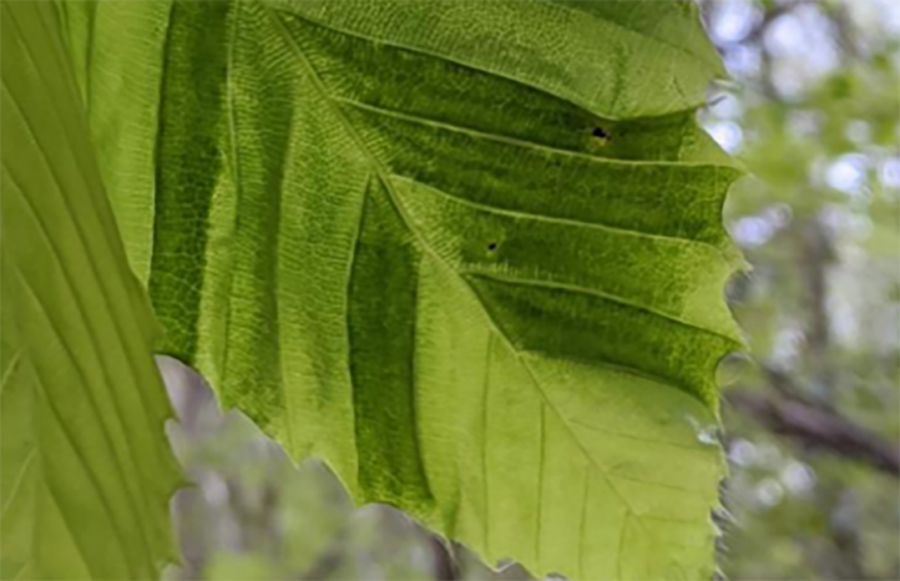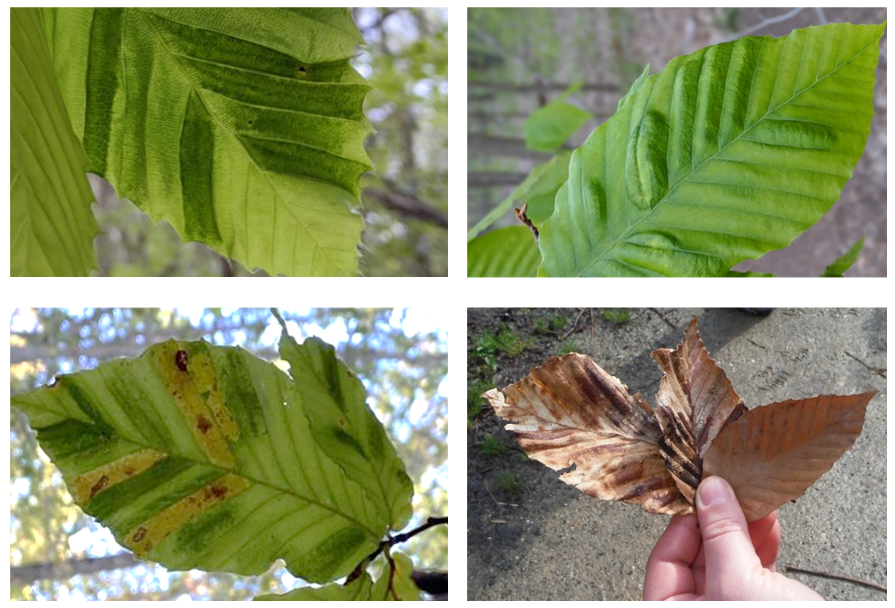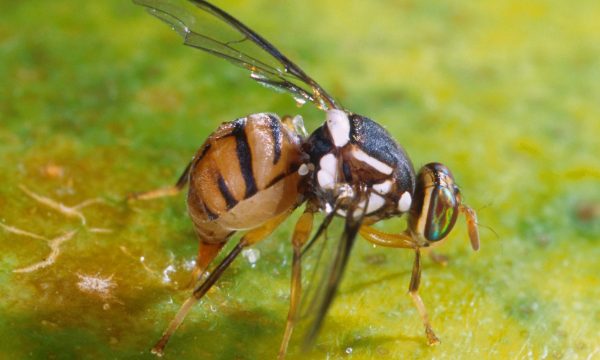Press release See a sick beech tree? Tell us to help prevent the spread of beech leaf disease!
In Belgium, we have many and valuable beeches, think of the Zonienwoud (Sonien Forest), for example. A disease advancing from the US now poses a serious threat to these native giants. It is vitally important for them to avoid introduction as well as to monitor our trees and detect signs of disease. The latter, however, is a titanic task, and scientists are short of eyes. Lend them YOUR eyes, by watching beeches on your weekly walk in the woods or park, by inspecting planting material, and by being alert for symptoms. Photograph and report symptoms that may indicate beech leaf blight, and in doing so, protect our trees and the ecosystems of which they are a part.

What is beech leaf disease?
Beech leaf blight is a new, rapidly emerging disease in the U.S. and Canada, where it causes much damage in forests and landscapes. The disease is detected there mainly on American beech (Fagus grandifolia), but also on European beech (F. sylvatica), the dominant beech species in Belgium. In Europe, the disease has not been found so far. Forest managers, nurserymen and horticulturists want to keep it that way at all costs, because the disease could seriously affect our - economically and ecologically important! -beech tree population. Researchers are therefore closely monitoring the situation, but they are short of eyes. The Institute for Agricultural, Fisheries and Food Research (ILVO), the Experimental Center for Ornamental Horticulture (PCS), and Walloon partners are therefore asking citizens to report symptoms that may indicate the disease.
How do I recognize beech leaf disease?
In diseased beech leaves and buds is a microscopic nematode: the leaf nematode, Litylenchus crenatae subsp. Mccannii. You can't see it, of course. What you can see is deformation and discoloration of the leaves.
In spring and summer you see
- dark green strips between leaf veins (especially well visible at the base of the leaf)
- crinkled leaves with leathery texture
- curled leaves
- Bumps and pits in the leaf
In the fall and winter you see:
- strips between nerves colored brown and yellow (leaves on the tree and on fallen leaves)
Especially saplings with a trunk diameter of less than 10 cm are susceptible.

How and where can I report symptoms?
When you think you've recognized the symptoms of beech leaf blight, it's best to take a picture. Be sure to capture the leaves as well as possible, and also take pictures of the branches and the entire tree. These photos, together with the exact location of the tree and your contact information, can be sent to ILVO. (nicole.viaene@ilvo.vlaanderen.be), or you can use the (Dutch-language) module voor plaagorganismen op waarnemingen.be. After each report, a plan is developed based on the photographs to reach a final diagnosis. If infection is strongly suspected, an on-site visit, sampling and laboratory analysis of plant material then occurs.
Wat if the diagnosis is positive?
A positive diagnosis is especially bad news for the tree: within a period of 3 to 7 years, thinning of the canopy and weakening of the tree can be expected. Indirectly, this has a major impact on the tree's immediate environment, as it provides a habitat and food source for many birds, squirrels, mice, etc. And when leaves disappear, more light reaches the soil, allowing other species to grow better: the ecological balance is disturbed and the soil flora changes.
But, if we can detect the disease quickly, scientists can also get straight to work: they can study the biology of the disease, evaluate the risks and develop appropriate measures to contain localized infections in our forests and parks. Those measures will depend very much on the climatic characteristics of each region, and they are often completely different from those in North America.
Can I do more than just report this?
Yes! Especially gardeners and tree growers and traders play a key role in prevention and additional measures. They are advised not to import any beech tree material (branches, twigs, leaves, seedlings or nursery material), as well as soil or organic material from affected areas. In addition, it is important to check nursery material of beech trees for symptoms of beech leaf blight before purchase. In doing so, it is good to know that so far only beech trees (Fagus spp.) are affected, so also Fagus grandifolia (American beech), and several cultivars of our common F. sylvatica (European beech) and F. orientalis (Oriental beech). Other beech species (F. engleriana, F. crenatae,...) are probably also hosts.
More info and contact: https://ilvo.vlaanderen.be/nl/onderzoeksprojecten/fytosanitaire-status-en-epidemiologie-van-de-beukenbladziekte-in-belgi%C3%AB


